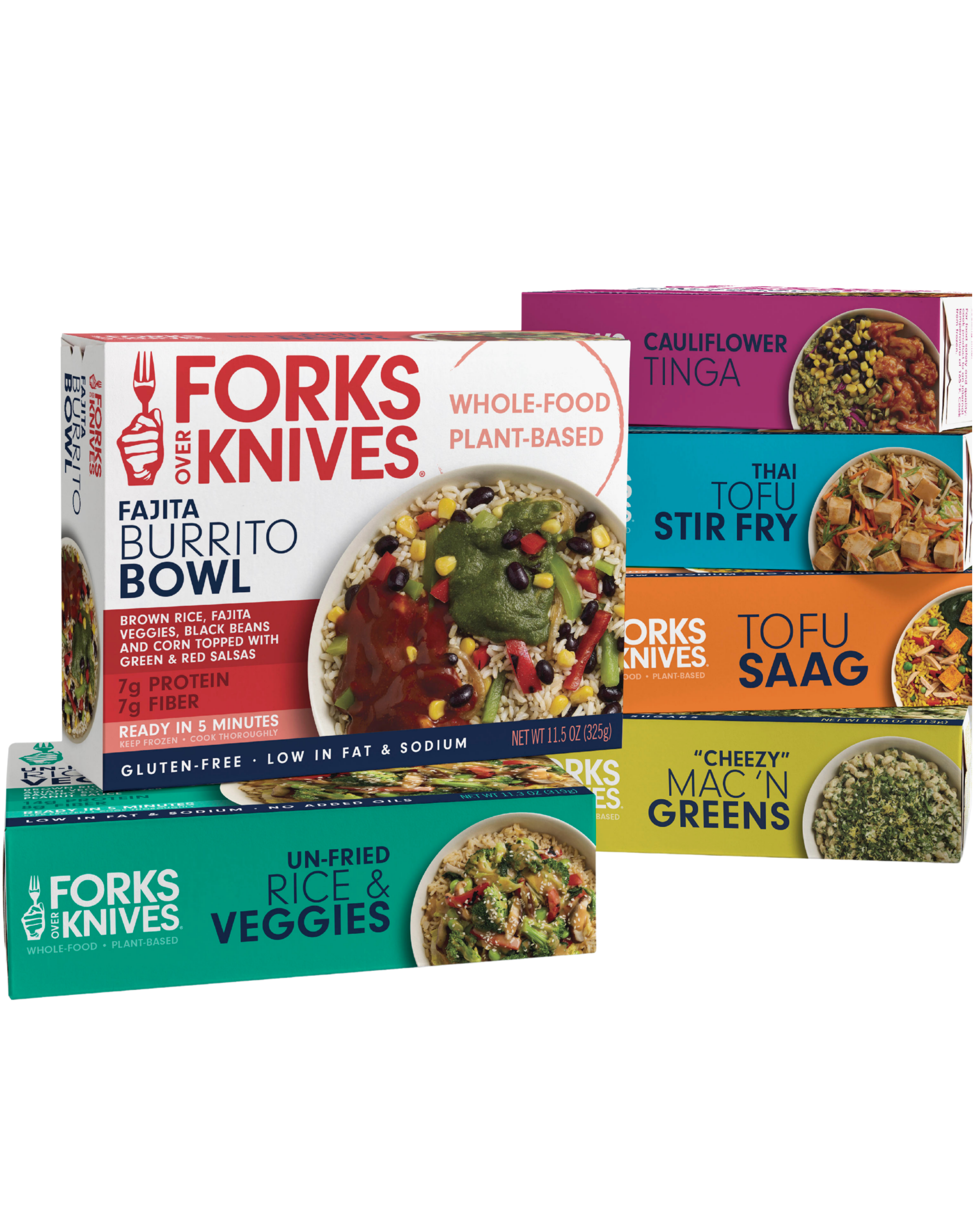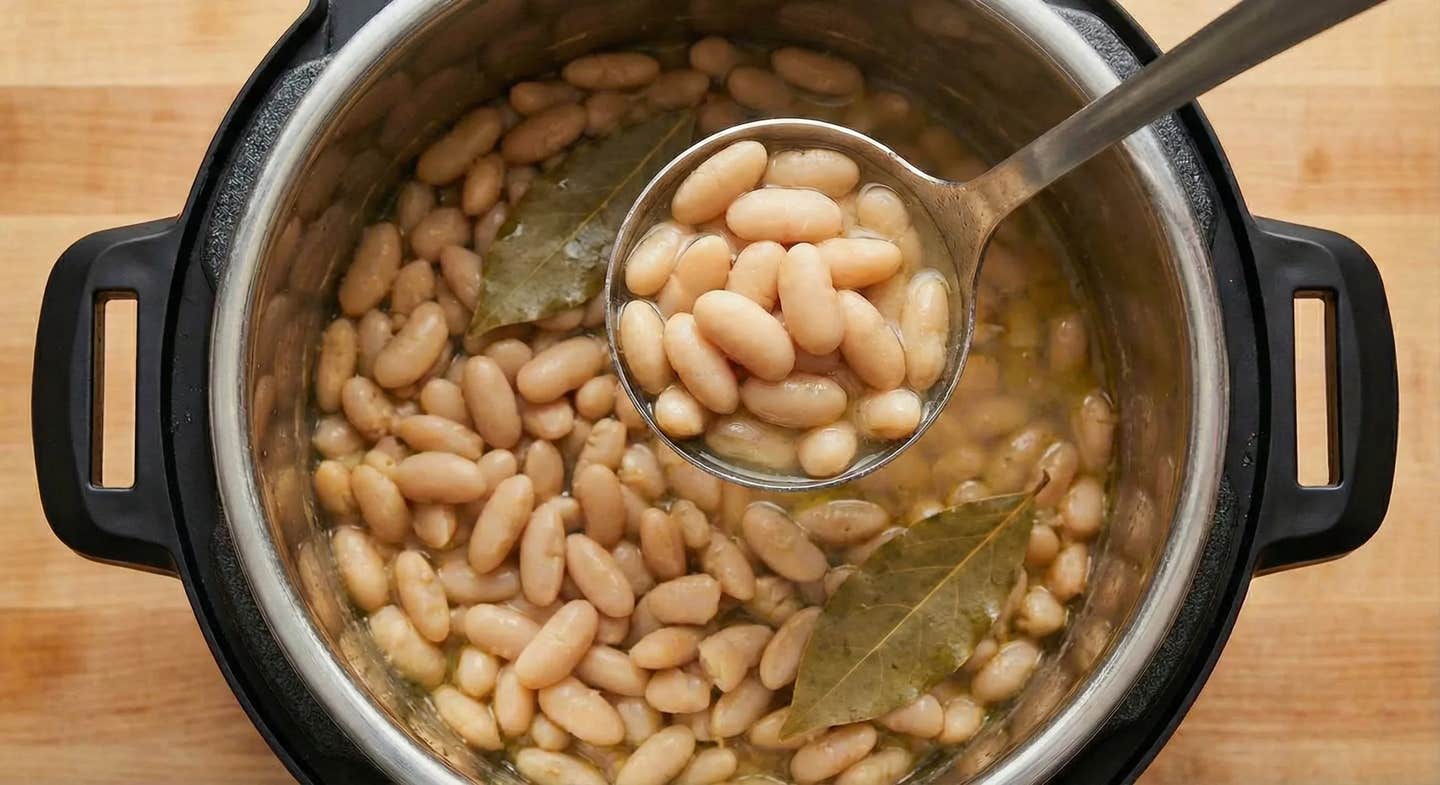Love the flavor explosion that happens when you pair fresh basil with peak-season tomatoes? Then you’re sure to enjoy all the other herb-and-produce pairings out there. The following guide tells you everything you need to know about adding fresh herb flavor to all your plant-based dishes—and includes easy recipes from Forks Over Knives to help get you started.
Basil
Flavor notes: Sweet, slightly peppery; best added just before serving
Commonly used in: Pesto
Pair it with: Tomatoes (of course!), corn, eggplant, potatoes, peaches, summer squash, melons, and berries
Try this recipe with basil: Watermelon-Basil Ice
Chives
Flavor notes: Oniony-garlicky, fresh and mild; best added just before serving
Commonly used in: Mashed and baked potatoes
Pair them with: All vegetables, but especially potatoes, sweet potatoes, cauliflower, corn, cucumbers, and mushrooms
Try this recipe with chives: Loaded Potato Skins
Cilantro
Flavor notes: Distinctive, bright, and citrusy; best added just before serving
Commonly used in: Salsas, Mexican and Thai dishes
Pair it with: Avocados, beets, carrots, cauliflower, corn, cucumbers, and tomatoes
Try this recipe with cilantro: Creamy Pasta Primavera
Dill
Flavor notes: Evergreen with hints of celery
Commonly used in: Pickles, borscht
Pair it with: Asparagus, broccoli, corn, cucumbers, potatoes, tomatoes, beets, spinach, and cabbage
Try this recipe with dill: Potato Salad with Avocado and Dill
Lemon Verbena
Flavor notes: Sweet, floral, and lemony; good for steeping and marinating
Commonly used in: Herbal teas
Pair it with: Carrots, beets, fennel, corn, tomatoes, and all types of fruits
Try this recipe with lemon verbena: Nice Cream
Mint
Flavor notes: Pungent and refreshing when raw, mellow and oregano-like when heated
Commonly used in: Teas and Middle Eastern salads
Pair it with: Beets, carrots, cucumbers, eggplant, leafy greens, peas, squash, tomatoes, and all summer fruits
Try this recipe with mint: Green Pea Hummus with Fresh Mint
Oregano
Flavor notes: Pungent, peppery, spicy; good for grilling, roasting, and simmering
Commonly used in: Tomato sauces
Pair it with: Eggplant, beans, bell peppers, leafy greens, squash, artichokes, spinach, and citrus
Try this recipe with oregano: Spanish-Style Olive-Herb Sauce
Parsley
Flavor notes: Fresh with a hint of bitterness
Commonly used in: Potato dishes, grain salads
Pair it with: All vegetables but especially salad greens and tomatoes
Try this recipe with parsley: Layered Vegetable Salad
Sage
Flavor notes: Earthy with hints of pine; good for simmering and marinades
Commonly used in: Holiday stuffings
Pair it with: Beans, apples, squash, tomatoes, potatoes, cauliflower
Try this recipe with sage: Delicata Squash Boats with Cauliflower Bechamel
Tarragon
Flavor notes: Pungent, grassy, and anise-flavored
Commonly used in: Tartar sauce, French sauces
Pair it with: Asparagus, beans, fennel, potatoes, tomatoes, squash, peaches, pears, melons, and salad greens
Try this recipe with tarragon: Barley and Sweet Potato Pilaf
Herb-and-Produce Pairings: Basic Rules
Freestyle cooking with fresh herbs can be daunting at first. Here’s how to gain confidence in the technique while boosting the flavors of your foods.
Start small. Begin by sprinkling 1 to 2 Tbsp. of a chopped fresh herb over a simple dish (for four people) or a big plate of steamed vegetables. This amount will give you an idea of the flavor an herb imparts without overwhelming the recipe.
Go bigger and bolder. Like what you taste? Try upping the herb amounts. Play around with sizes as well. Tear herb leaves instead of chopping them or shower a dish with a fluffy chiffonade.
Switch things up. Try new herbs in place of old favorites. Sub basil for mint in a tomato salad, try tarragon in place of dill, and add cilantro in place of parsley. A simple herb switch can totally transform a recipe.
Related News
Get Our Best Price On The Forks Meal Planner

Forks Meal Planner takes the guess work out of making nutritious meals the whole family will enjoy.
Master Plant-Based Cooking!

Our new course features over 100 lessons, 50+ recipes, downloadable guides, and more!
New Frozen Meals!

Introducing our new frozen meals: Doctor-recommended, chef-crafted, & ready in minutes.




